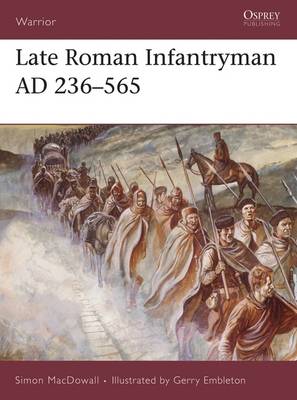Warrior S.
1 primary work • 3 total works
Book 9
This is a description of the uniforms, weaponry, military practices and daily life of the Roman soldier during the twilight years of the Empire, a time which saw the army increasingly influenced by German troops and the rise of private armies. The book is illustrated with contemporary images, diagrams and colour plates.
v. 17
The 3rd to the 6th centuries saw the collapse of the classical Mediterranean civilization and the emergence of new states in western Europe based on the Germanic warrior society. This book focuses particularly on the men who made up the retinues of the Germanic warlords who carved kingdoms out of the carcass of the West Roman Empire. Although sources are scarce, Simon MacDowall constructs a convincing picture, using evidence from Roman historians, German archaeology and Anglo-Saxon poetry. The warriors' society, hierarchy, training, equipment, appearance, tactics and style of fighting are all examined, building a comprehensive portrait of the Germanic warrior in this period.
v. 15
The twilight of the Roman Empire saw a revolution in the way war was waged. The drilled infantryman, who had been the mainstay of Mediterranean armies since the days of the Greek hoplite, was gradually replaced by the mounted warrior. This change did not take place overnight, and in the 3rd and 4th centuries the role of the cavalryman was primarily to support the infantry. However, by the time of the 6th century, the situation had been completely reversed. Late Roman Cavalryman gives a full account of the changing experience of the mounted soldiers who defended Rome's withering western empire.


